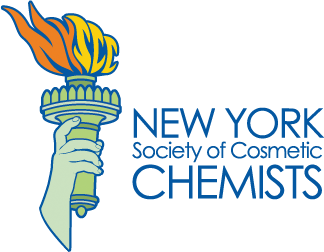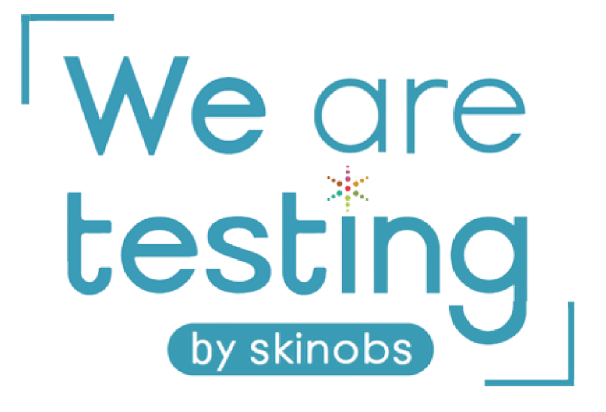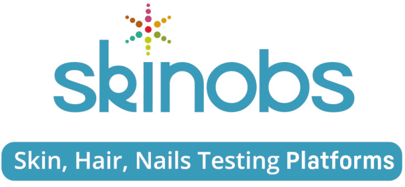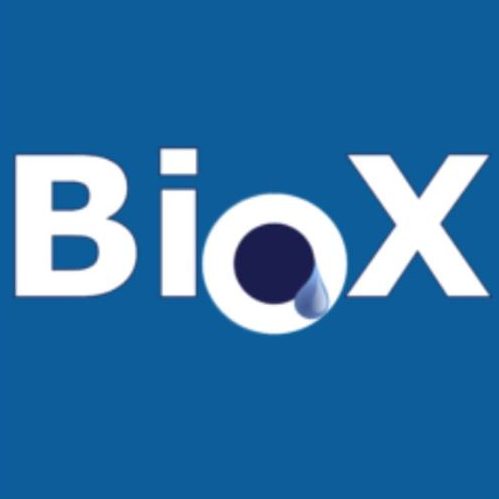We Are Testing by Skinobs at New-York Suppliers’ Day 2024 with BioX Systems
29 February 2024

Cosmeticians from all over the world are reuniting once again at the New-York Suppliers’ Day the 1&2 May 2024, allowing much-needed and fruitful exchanges with partners, suppliers and customers.
👉 The Skinobs team will be delighted to welcome you booth 1655, to talk with you about your evaluation projects during your time at NY Suppliers’ Day!
The event is also the occasion for Skinobs to plan the third edition of “We are testing”, a way for visitors to discover testing labs expertise during the show.
As a reminder, Skinobs’ mission is to guide you in your evaluation process and to advise whatever classic or innovative claims to be assessed. This is to help you to identify the most appropriate methods and choose the right Contact Research Organization (CROs) around the world that best match your evaluation specifications for :
- Clinical objectivation such as tolerance, efficacy, sensory analysis, or consumer tests,
- Preclinical assays in-tubo, in-vitro or ex-vivo such as stability, safety, container-content or efficacy assays.

What is We Are Testing, new concept by Skinobs Testing Platforms ?
We are Testing is you! “We Are Testing” is a practical, eco-responsible, and dynamic way for those involved in testing, large and small, to be present at the events that count in the sector.
“We Are Testing” is an intelligent solution which, thanks to the synergy of each exhibitor and the strength of Skinobs’ communication, shares the latest innovations with test managers from all over the world.
“We Are Testing” is a new space for meetings and exchanges specially dedicated to assessment managers at international trade fairs:
- Offer a 360° view of assessment from around the world
- Share the recognized expertise of test providers,
- Provide the keys to speeding up testing projects with the latest innovations
We Are Testing is a new adventure by Skinobs, and we are thrilled to be able to share this concept around the world!

Skinobs will share its booth 1655 with 6 others co-exhibitors, including BioX Systems

The skin, our body’s largest organ, is constantly under attack from environmental stressors and pathogens. The outmost layer of the skin, the stratum corneum, forms a critical barrier against water loss and physical damage, while the trillions of microorganisms living on the skin, known as the microbiome, play a crucial role in maintaining the skin’s barrier integrity.
In recent years, research has shown that the microbiome is also a key player in skin health. It has a significant impact on systemic immune regulation, inflammation, and various skin conditions, such as eczema, psoriasis, and acne [1]. Dysbiosis a lack of balance in the skin’s microbial population, can lead to a wide range of health problems, making it essential to understand the relationship between the skin barrier and the microbiome.
Expert researchers are actively working to understand this interdependent relationship, which is crucial for developing effective treatments for skin-related conditions. By gaining a deeper understanding of the relationship between the skin barrier and the microbiome, scientists can identify key factors that affect the skin’s health, leading to improved patient outcomes.
The method used to measure the skin barrier is Transepidermal Water Loss (TEWL). In this article, we present a pair of publications in which AquaFlux™ was used to measure TEWL in parallel with skin microbiome analysis.
The AquaFlux™ is an innovative instrument for measuring skin TEWL [2,3]. Unlike traditional open-chamber methods, it utilizes a closed chamber to ensure accurate and consistent TEWL measurements by eliminating interference from external air movements. The device’s unique design provides invaluable technology for scientists in research and clinical applications. It incorporates a condenser (Fig.1) at the upper end of the chamber, which continuously removes and converts water vapor into ice, resulting in the highest precision for continuous TEWL measurements.

Fig.1 The AquaFlux™ and the measurement chamber
In a recent study, researchers examined the maturation processes of healthy skin in children during childhood, as well as the composition of the skin microbiome [4]. The objective of the study was to expand the understanding of skin maturation processes, including skin structure, function, composition, and microbiome, in children up to 10 years old compared to adults.
The study measured skin parameters, including TEWL in participants from four age groups: babies (0-2 years), young children (3-6 years), older children (7-<10 years), and adults (25-40 years). TEWL was measured using the AquaFlux™ device.
The results revealed that TEWL gradually decreased from babies to young children and older children, with the values of older children being statistically similar to those of adults. This suggests that the skin barrier function fully matures by the age of 6 years. These findings align with previous research, which also found higher TEWL in infants compared to adults.
Furthermore, the composition of the skin microbiome in all children groups differed from that of adults and continued to mature in a site-specific manner during early childhood.
One of the novel aspects of this study is that it investigates skin maturation processes in children up to 10 years old. The results demonstrate that, compared to adults, infants and young children have a more permeable skin barrier, higher skin surface hydration, and lighter skin colour. However, these differences disappear in children above 6 years of age. Additionally, the composition of microbial communities remains distinct from that of adults even in older but preadolescent children.
These findings can serve as valuable reference data for comparing with data obtained from individuals with skin conditions.
Another area of interest involves researching the microbiome in patients with ichthyoses. This is a rare genetic disorder characterized by impaired epidermal barrier function and an increased susceptibility to microbial infections. The significance of this research lies in the fact that the skin microbiome of congenital ichthyoses remains largely unexplored.
In a recent publication TEWL and the metagenome profile of the skin microbiome were analysed for major congenital ichthyosis subtypes [5]. TEWL measurements were conducted using the AquaFlux™.
Measurements were taken on various sites on both healthy and affected skin. The results indicated that TEWL measurements reflecting epidermal barrier integrity were higher in the ichthyosis group compared to healthy controls, as anticipated. Furthermore, the skin microbiome of individuals with ichthyoses exhibited significant alterations compared to that of healthy individuals, with distinct changes observed among different ichthyosis subtypes.
This study provides the framework for analysis of the impact of new therapeutics on microbial balance in understanding mechanism of action.
Conclusion
Recent research reveals intriguing connections between microbial diversity and TEWL. Higher microbial diversity is associated with lower TEWL, indicating a healthier skin barrier. Conversely, reduced diversity may lead to increased TEWL and compromised barrier function [6].
This exciting intersection of research opens new horizons, and AquaFlux™ emerges as a promising instrument to unravel the complex relationship between TEWL and the skin microbiome. By bridging these domains, it gains deeper insights into skin health, immunity, and the delicate balance that sustains its largest organ.
Find out about the company and the BioX products here.
References:
- 1. Skin Barrier Function and the Microbiome, -Ji Lee, M. Kim, Int. J. Mol. Sci.2022, 23(21), 13071.
- AquaFlux – A New Instrument for Water Vapour Flux Density Measurement, E.P. Berg, F.C. Pascut, L.I. Ciortea, D. O’Driscoll, P. Xiao and R.E. Imhof, Proceedings of the 4th International Symposium on Humidity and Moisture, Center for Measurement Standards, ITRI, RoC, ISBN 957-774-423-0, 288-295, (2002).
- AquaFlux – A New Instrument for the Measurement of Water Vapour Flux Density from Arbitrary Surfaces, R.E. Imhof, E.P. Berg, R.P Chilcott, L.I. Ciortea, F.C. Pascut and P. Xiao., IFSCC Magazine, Vol 5, No. 4, 297-301, 2002.
- 4. Skin maturation from birth to 10 years of age: Structure, function, composition and microbiome
N. Stamatas, P.-F. Roux, E. Boireau-Adamezyk, I. Lboukili, T. Oddos, Exp Dermatol. 2023 Sep;32(9):1420-1429. - 5. Distinct skin microbiome community structures in congenital ichthyosis, K.-Chian Tham , R. Lefferdink , K. Duan , S. S. Lim , X. F. C. C. Wong , E. Ibler, B. Wu, H. Abu-Zayed, S. M. Rangel, E. D. Duca, M. Chowdhury, M. Chima, Hee J. Kim , B. Lee, E. Guttman-Yassky, A. S. Paller, J. E. A. Common, Br J Dermatol. 2022 Oct;187(4):557-570.
6. A multi-study analysis enables identification of potential microbial features associated with skin aging signs, T. Myers, A. Bouslimani, et. al., Front Aging. 2023; 4: 1304705.
CONTACT
Sara Bahman
CEO
+44 (0)845 8622129
Technopark Building – 90 London Road
London SE1 6LN – UK







 Follow us on Linkedin!
Follow us on Linkedin!
You must be logged in to post a comment.